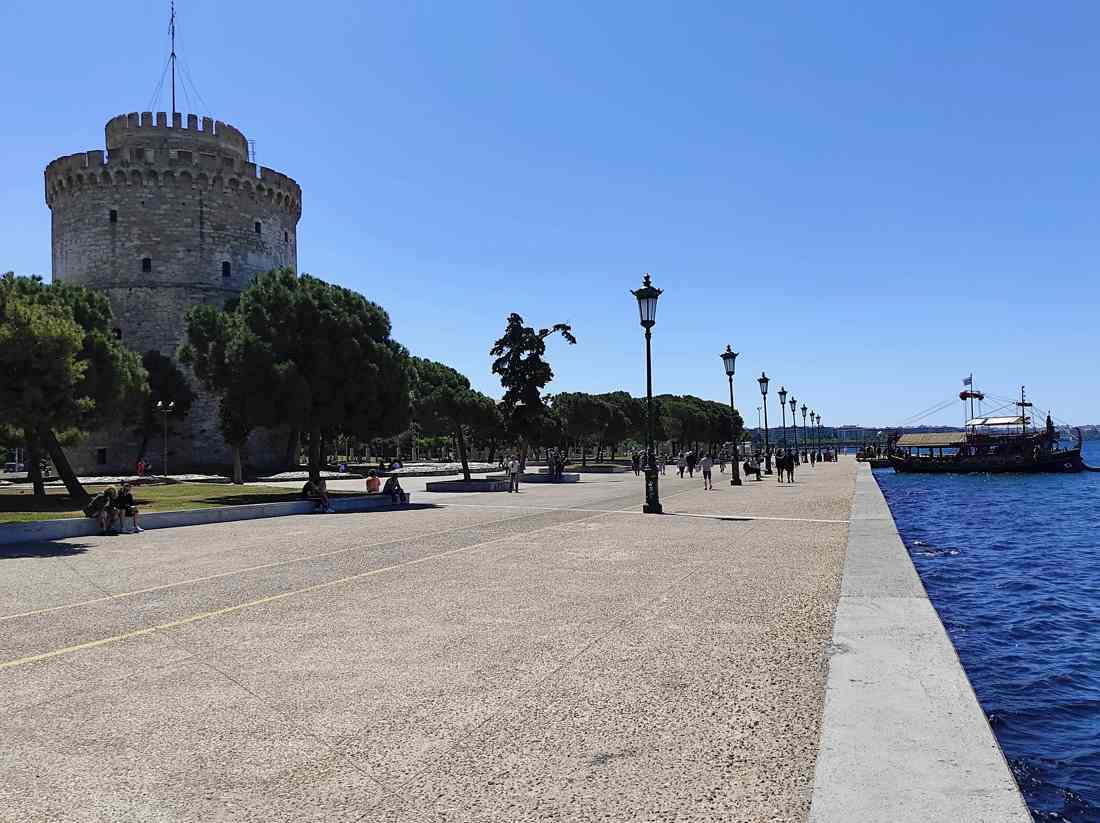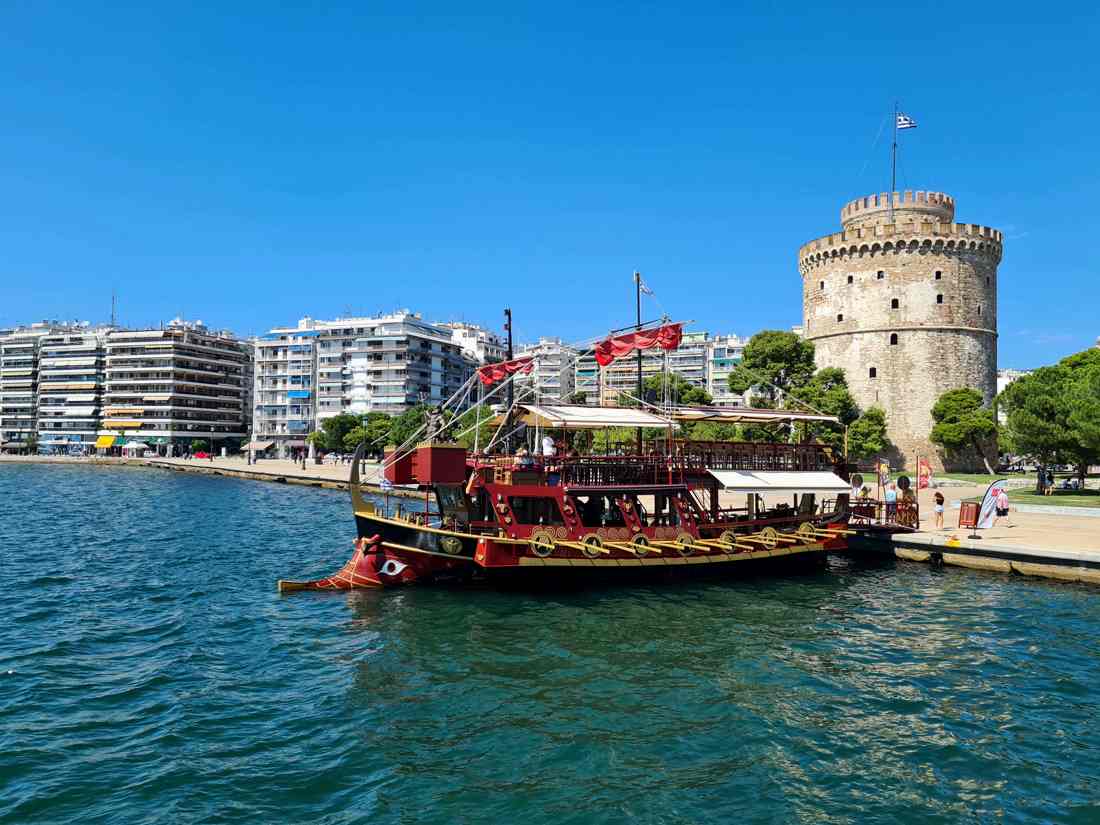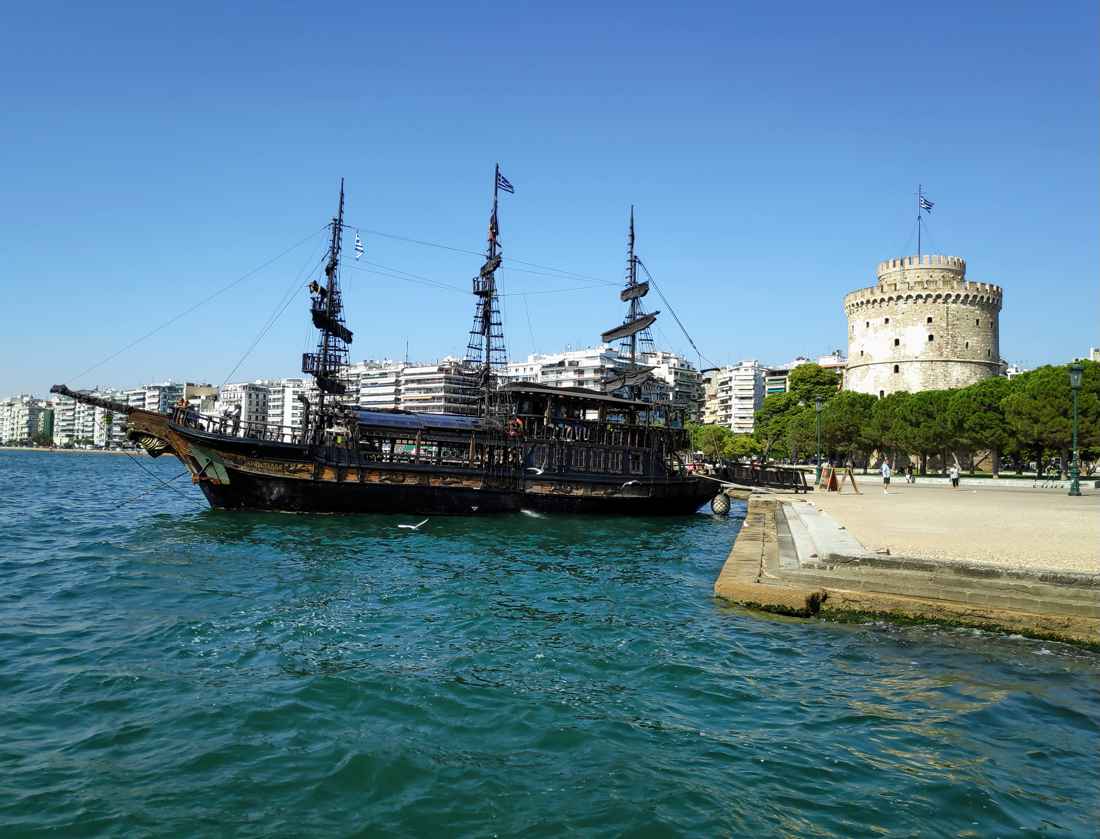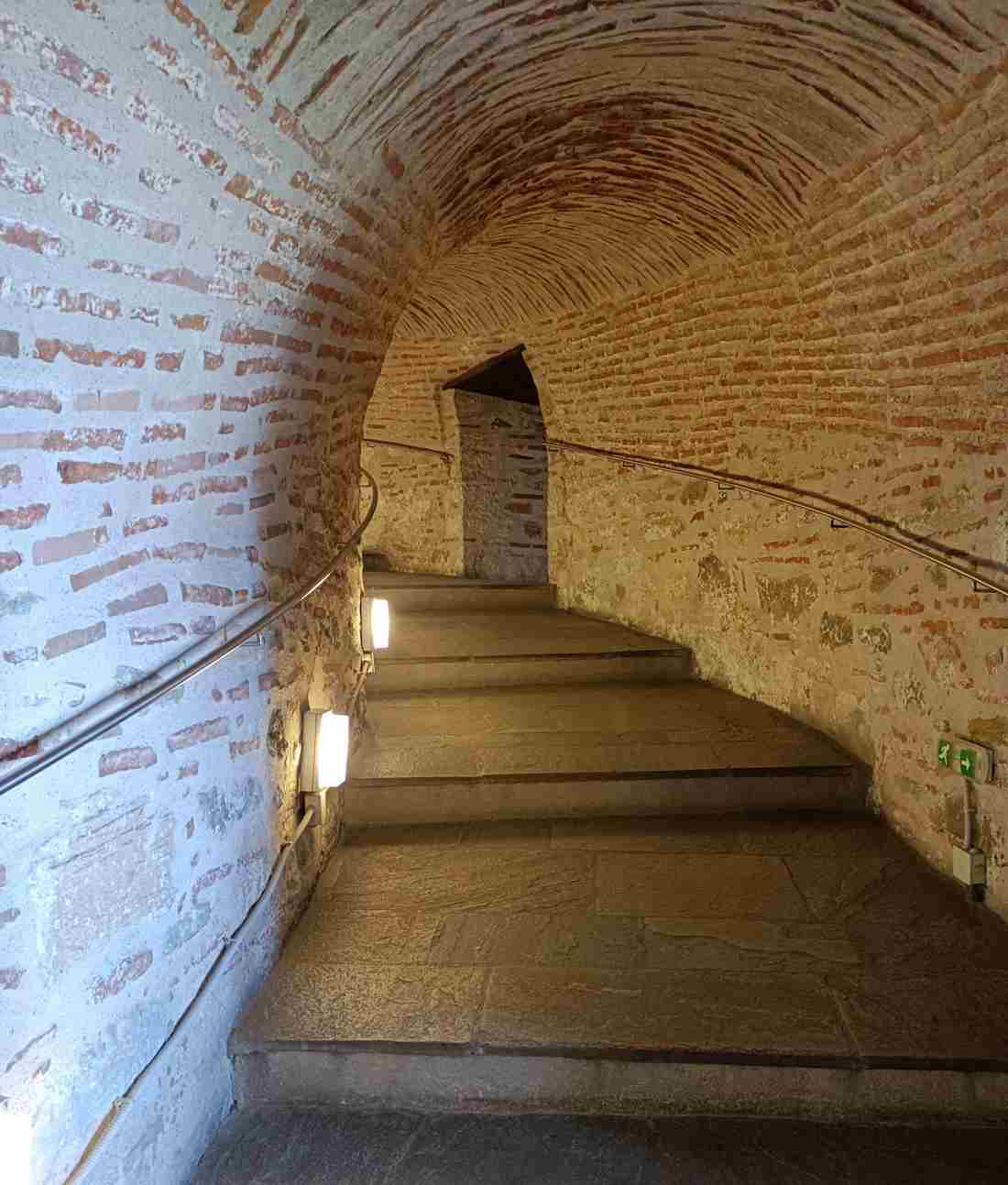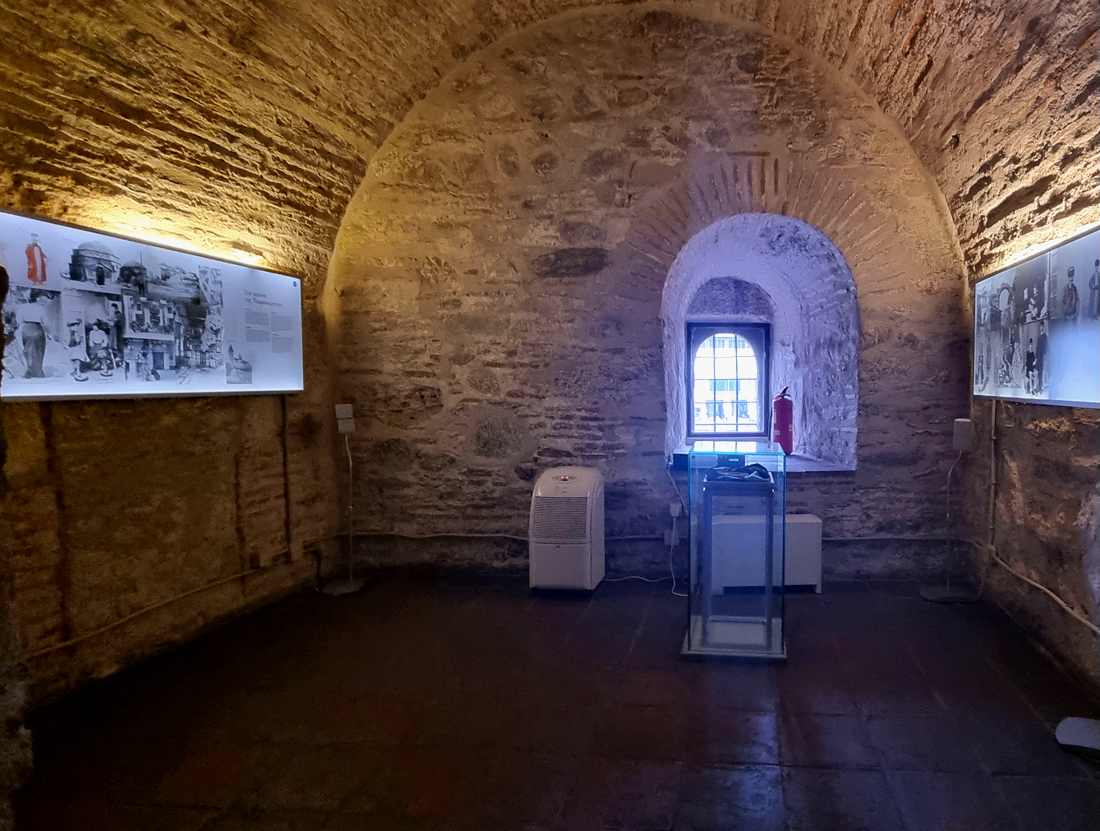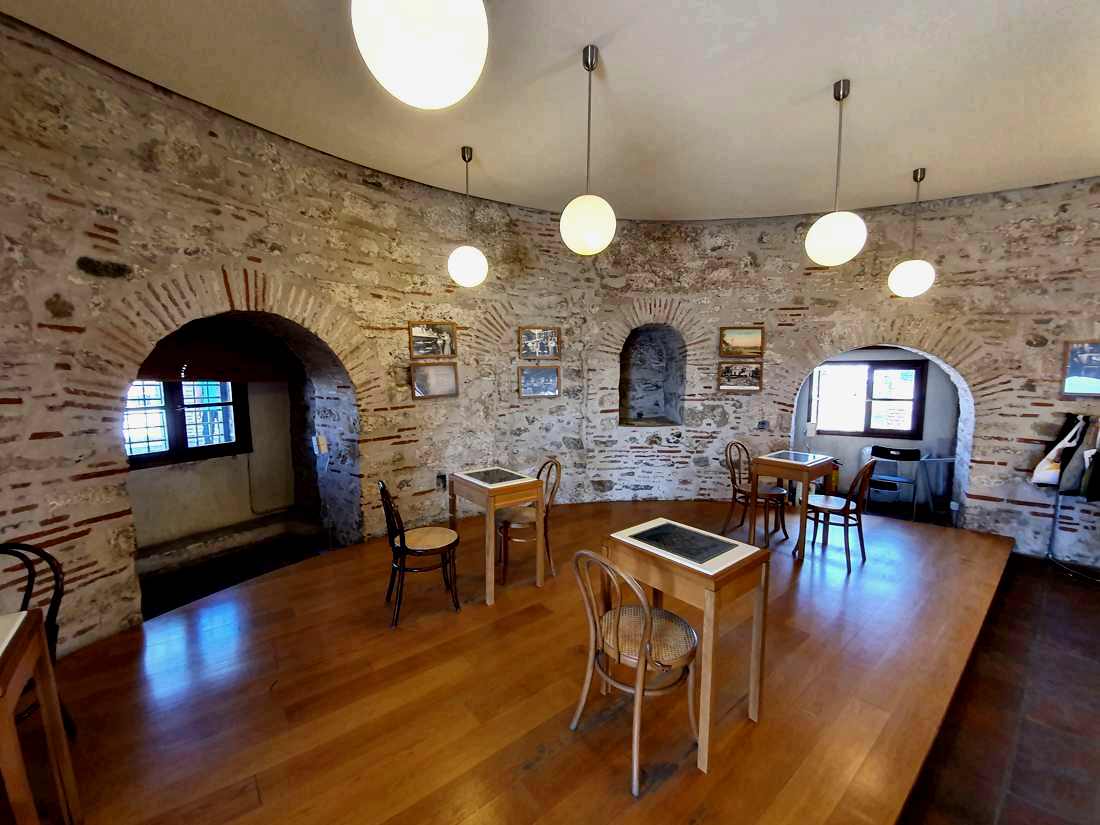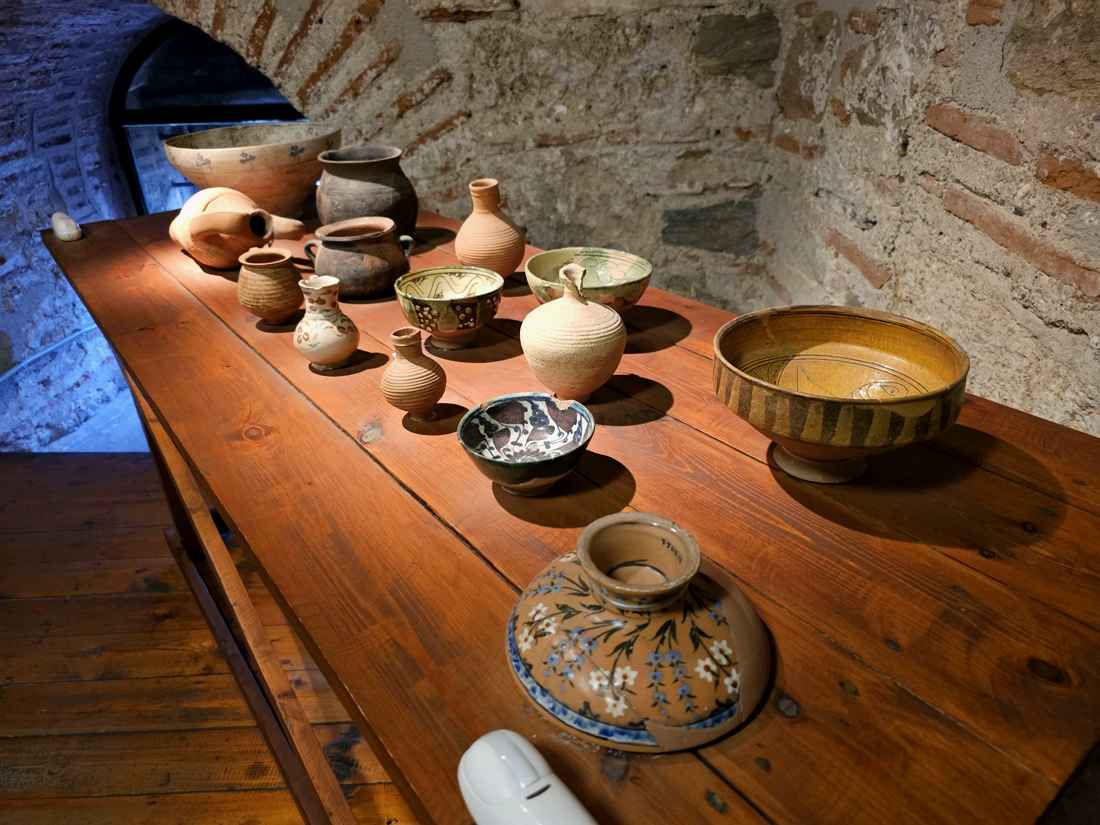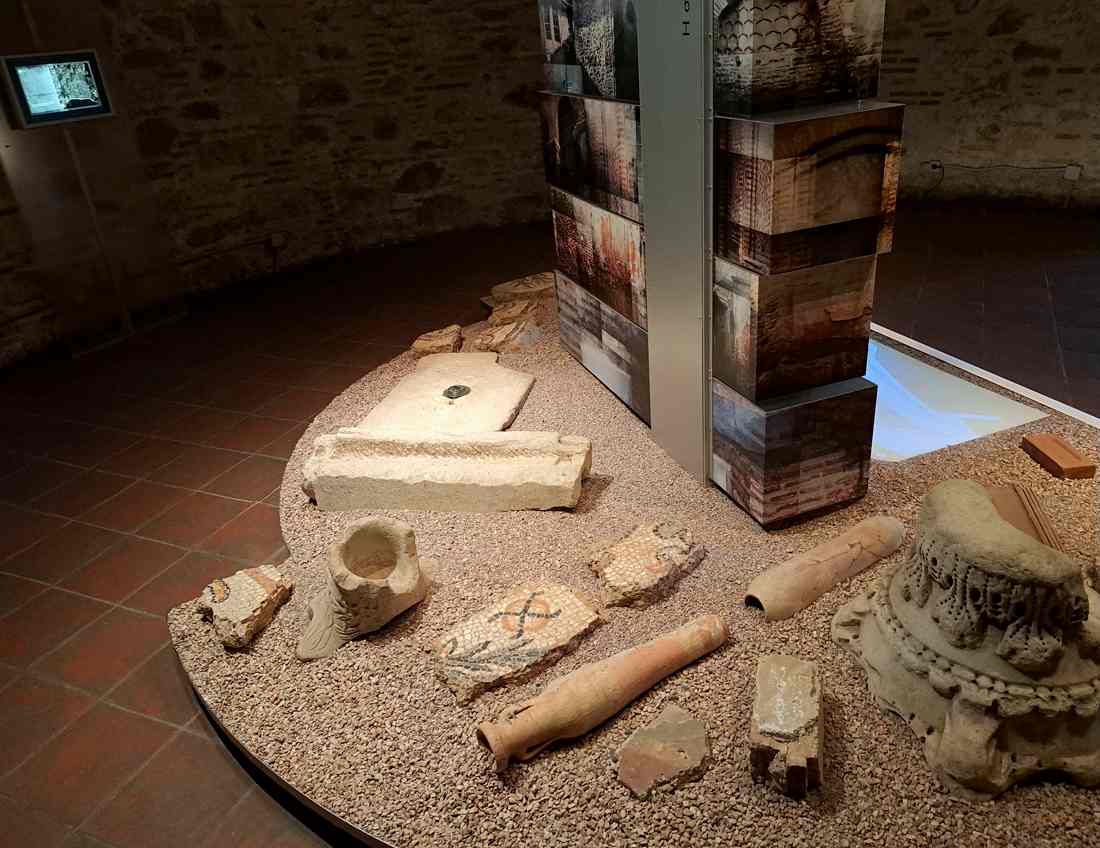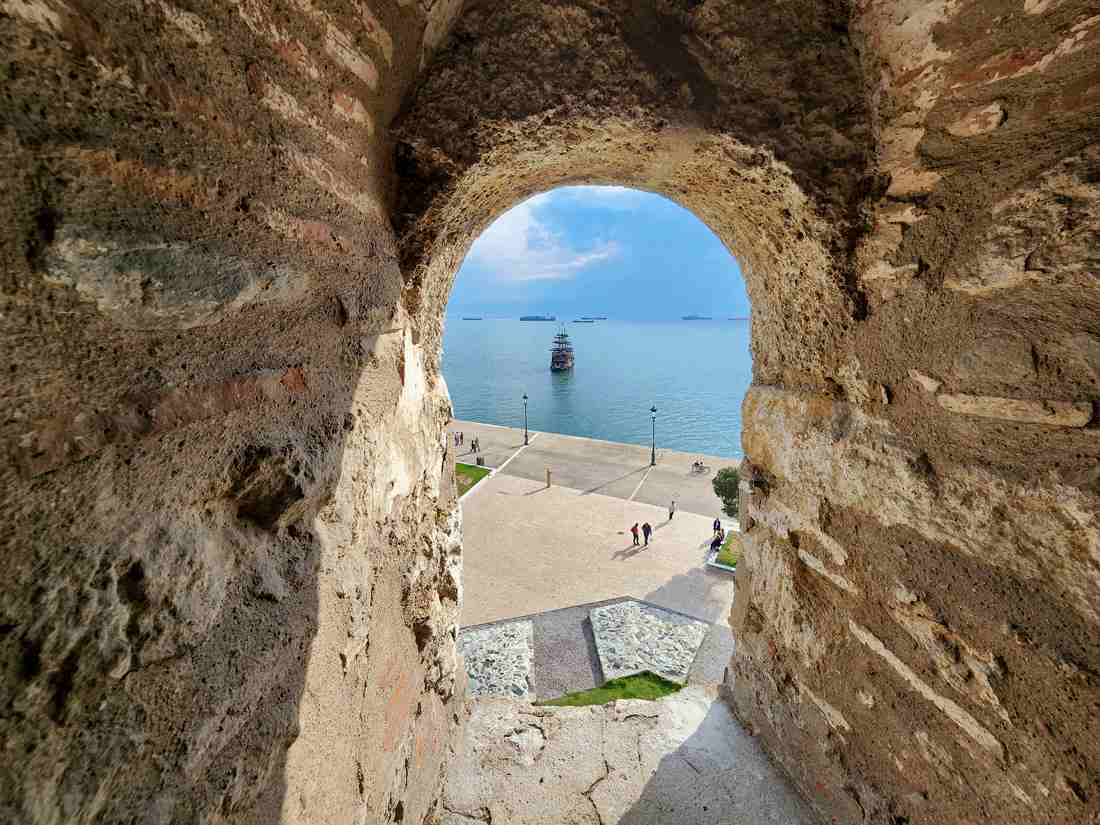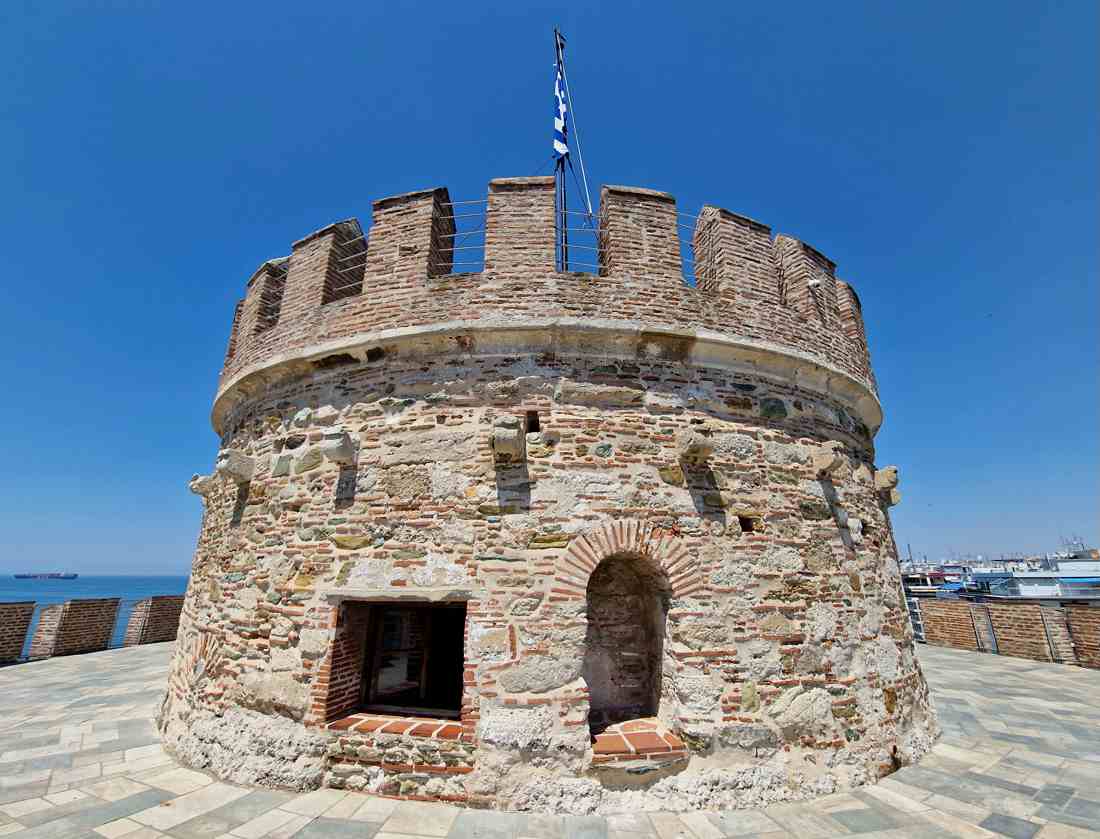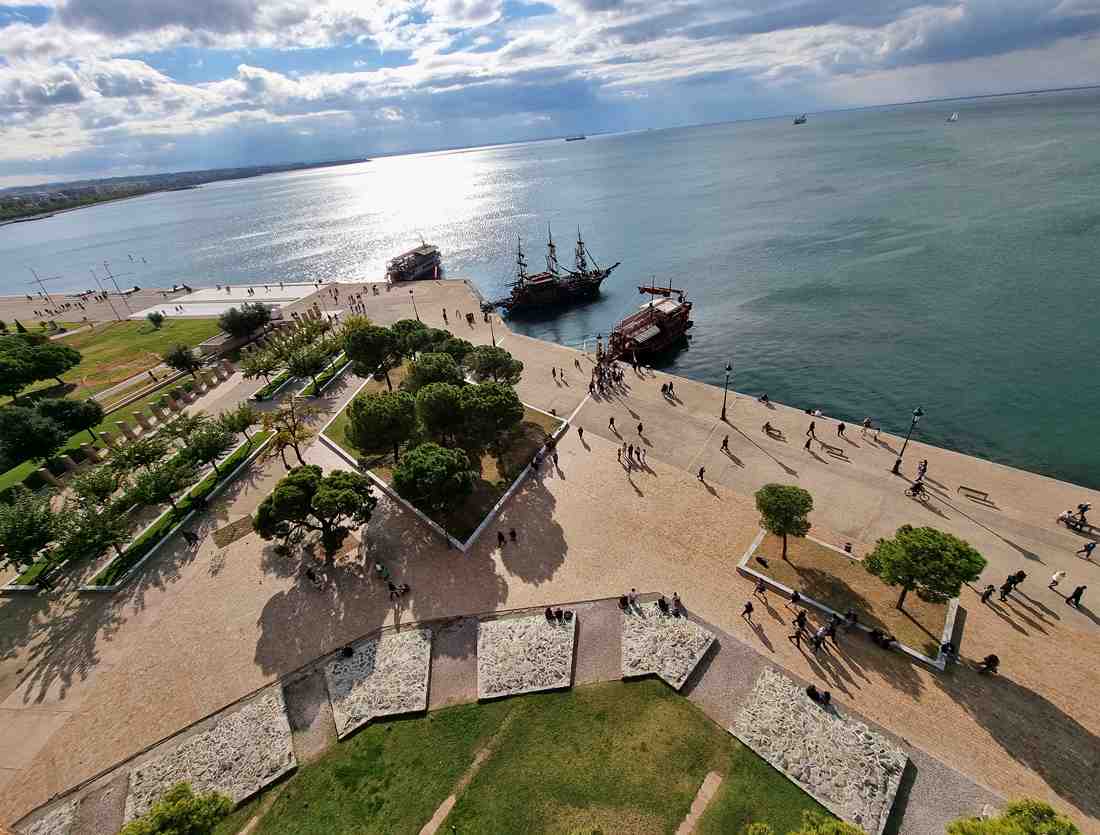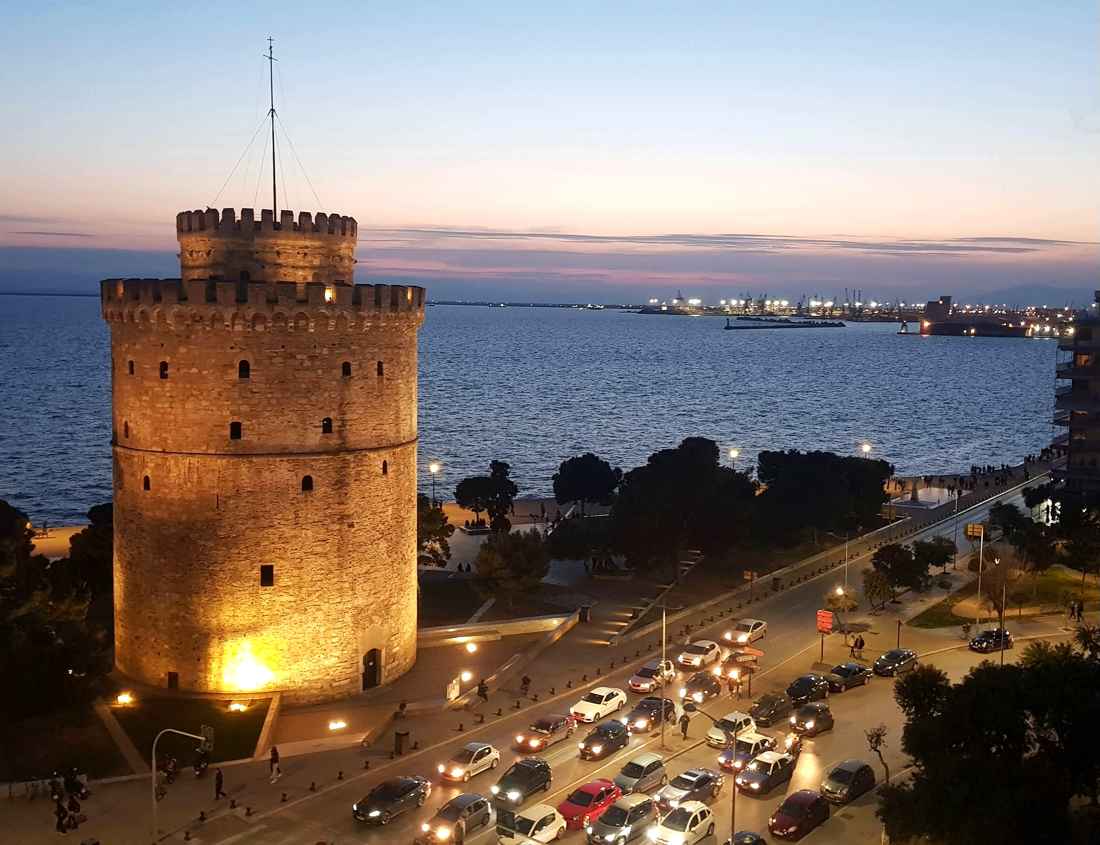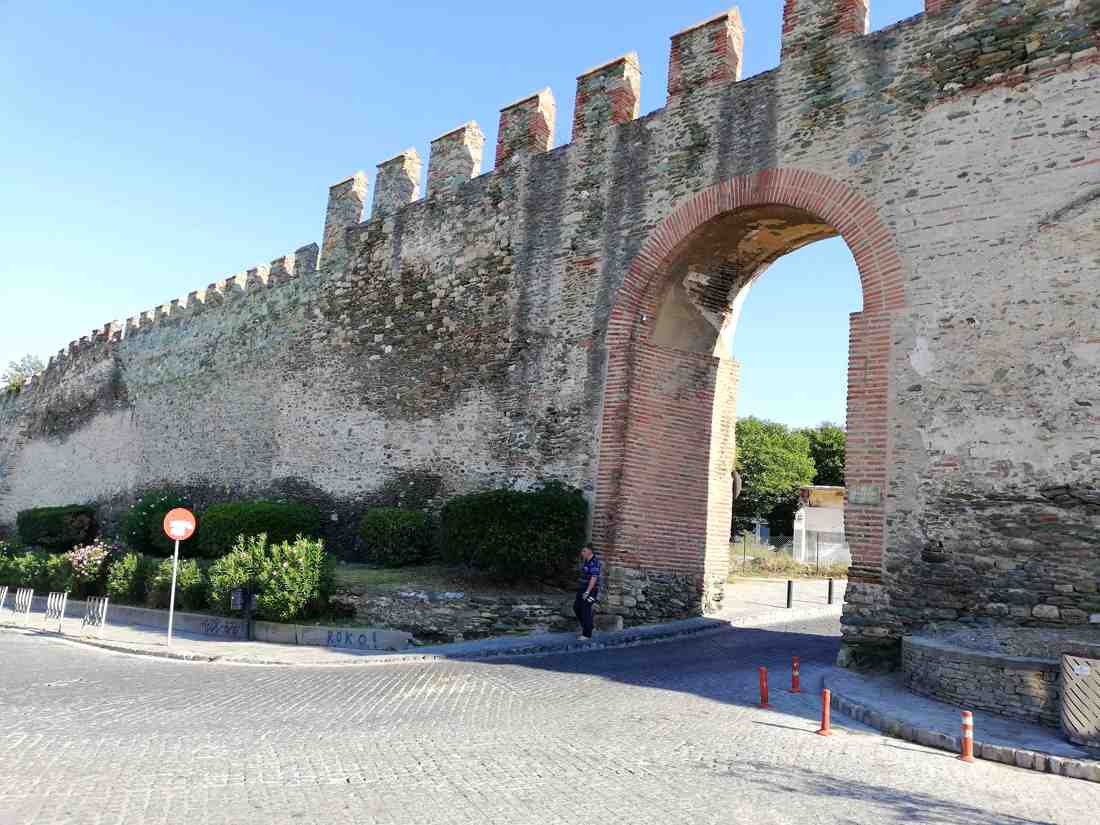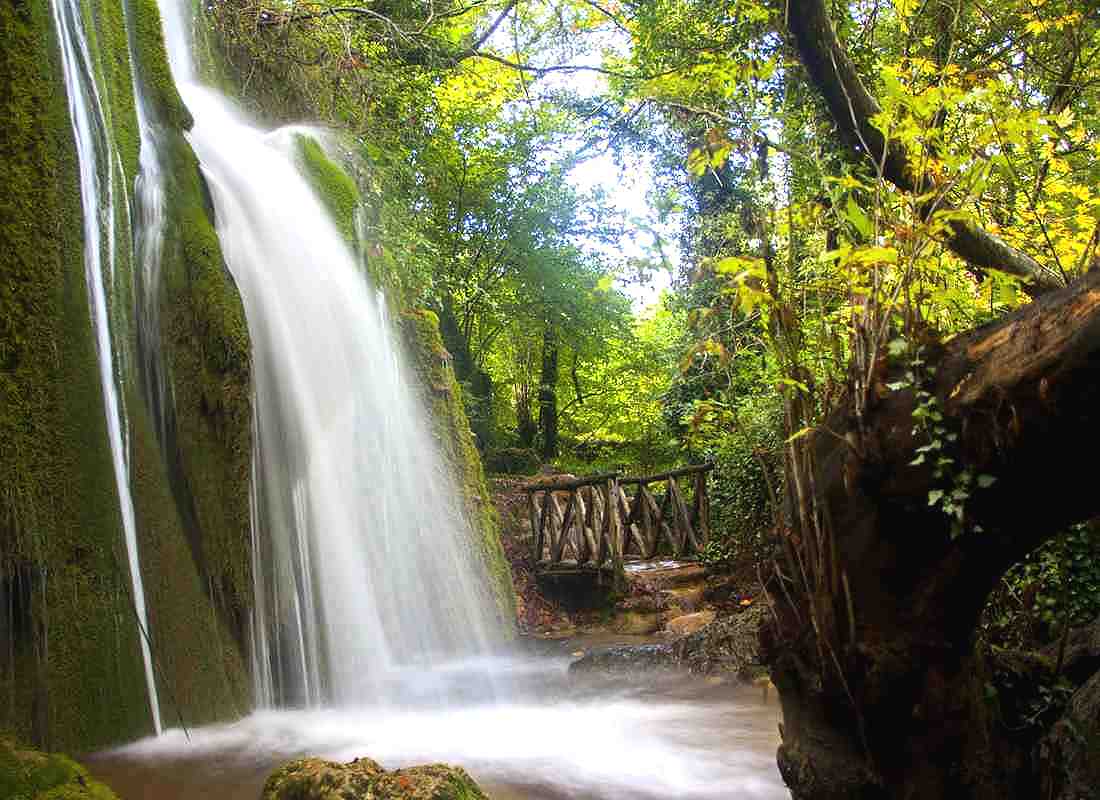
White Tower
The White Tower is the symbol of Thessaloniki, which today stands alone on the city's waterfront, but in the past it was the southeastern tower of the city's fortifications. The tower was built in the 15th century, after the conquest of Thessaloniki by the Ottomans in 1430. In its place stood an older tower that connected the eastern wall with the sea wall. The tower was the eastern end of the sea wall, another one was at the western end and a third one in the middle. During its long history, the tower changed names and uses from time to time. In the 18th century it was called the "Fortress of Kalamaria", and in the 19th century it was called the "Tower of the Janissaries" and the "Tower of Blood". The latter two names are related to the fact that it was a prison for prisoners of conscience, and its walls were drenched in blood from the frequent executions of prisoners by the Janissaries. In 1890, a convict whitewashed the tower with lime to gain his freedom, and since then it has retained its current name "White Tower". After the liberation of Thessaloniki in 1912, the tower came under Greek rule. The structure is located on the shore of the Gulf of Thermae and is 34 meters high, 22.7 meters in diameter and 70 meters in perimeter. Each of the six floors has a central room with a diameter of 8.5 meters, connecting to smaller perimeter rooms. A spiral staircase with a total length of 120 meters runs outside the rooms, resting on the inner wall of the cylindrical shape of the tower. On the top floor there is only the main hall, and outside the central hall, a rather spacious terrace that offers a beautiful view of the surrounding city and seascape.
Guest reviews
You may also be interested in similar information
Eptapyrgio Fortress
Thessaloniki, Greece
Skra Waterfalls
Thessaloniki, Greece



